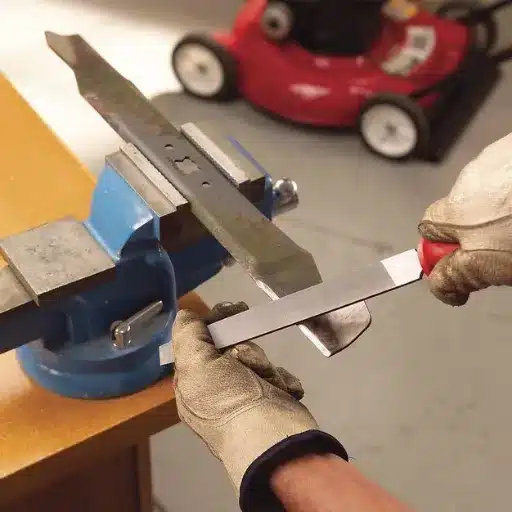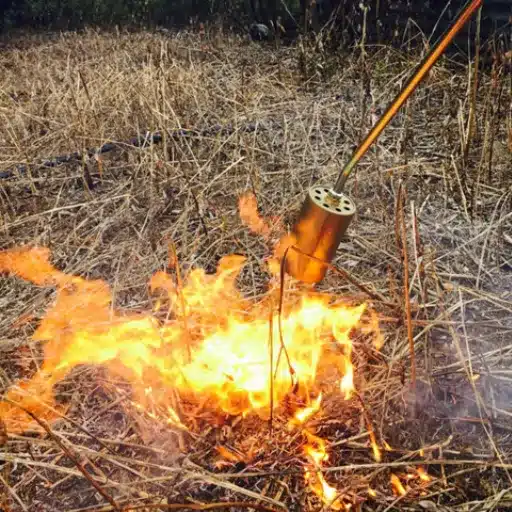Copper plating is a common practice in the industrial and manufacturing processes across a range of industries. It consists of coating materials with a layer of copper for a variety of purposes, mostly to improve the aesthetics and physical properties such as the durability, conductivity, and resistance to corrosion of the materials. In this handy book, we are going to examine how this process works; its methods and drawbacks; however, first, we discuss the benefits of copper plating and the industries where the process is applicable. This article tries to address both professional and amateur readers and offer them all necessary information and useful tips on a copper plating.
What is the Copper Plating Process?

Understanding the Copper Electroplating Process
Electrodeposition of copper into objects is called copper electroplating. In simpler terms, this refers to the application of electrochemical deposition of metallic copper onto the surface of a substrate. The substrate is placed in an electrolyte solution containing copper ions and an electrochemical potential is applied. Due to this current, copper ions are driven towards the work piece, achieving an even layer of copper plating on the substrate’s surface. This process is appreciated because it improves esthetic aspects, enhances the electrical conduction, and protects from corrosion.(Recommended products:Copper Plating Equipment)
The Function of Metal When Copper Plating
As in most applications, the metal substrate in copper plating or copper deposition is always the basic material underneath the copper that is to be applied. Other metals may need treatment of the surface to enable a deposition in a manner that is well distributed around the surface. Metal type determines several properties present in the plated object including mechanical strength, electric conductivity, corrosion resistance among others. Metals mostly used for copper electroplating include steel, zinc, or brass due to suitability with copper and for the purpose of the object to be plated.
The Role of Copper Ions in the Plating Process Step
Copper ions can be considered as the main players in plating because they provide copper that coats the underlying layer. Among these ions, however, during copper electroplating ions are carried by an electric current to the surface of the substrate coated with an electrolyte solution. These processes of ionic transfer are necessary for the deposition of a smooth and adherent layer of copper which forms the most important part of the whole plating process.
What Materials Do You Need for Copper Electroplating?

Finding a Suitable Plating Solution
A suitable plating solution for copper electroplating usually contains copper ions from copper sulfate, sulfuric acid to modify the pH and improve conductivity, and certain additives which improve the deposition characteristics of the layer and control the brightness and the hardness of the plated layer. It is important to keep the solution in good condition in order to maintain the results of the electroplating process.
The Significance of a Copper Electrode
During the electroplating operation, the copper electrode plays the key role of an anode from which the ions of copper dissolve into the solution which is to be plated. It supplies all the ions which are necessary for coping the surface ahead of covering it with an ionic coating, which is a reliable method of achieving a good quality coating. In addition to this, a pure copper electrode was used to ensure proper plating conditions and plating characteristics through controlling the ion concentration of copper within the electrolytic solution.
Additional Tools Required to Carry Out Plating
The only equipment that is absolutely necessary for performing copper electroplating will be a power supply, conductive electrodes and wires, some sort of glass or plastic container for the electroplating solution, and some degreasing agent in order to clean the surface of the substrate. A stirrer is advantageous to have in order to mix the copper-ion solution evenly, as are gloves and goggles for safety.
How to Prepare the Copper Plating Solution?

Mixing the Copper Sulfate and Acid Copper
In order to make the copper plating solution, copper sulfate is first dissolved into distilled water in an amount which allows complete dissolution for the target volume while constantly stirring. After this, sulfuric acid is introduced which will help in pH equilibrium and conductivity improvement, but do this slowly and carefully to avoid splashing. The required fine additives are then introduced to the bath as well and the solution of the bath is mixed thoroughly and is ready for plating use.
Ensuring and Maintaining Proper Conductive Properties.
For the copper plating solution to have the right conductive properties, the ion concentration should be maintained; this is normally done by weighing the amount of copper sulfate and acid. Observe the pH bearing in mind that for best conductivity pH has to be range optimized between 0.5 – 1.0. Observe and control the temperature of the solution as necessary and as recommended relatively often in order to facilitate movement of the ions and maintain the quality of the copper plating.
What are the Key Moments in the Copper Plating Process?

Starting Procedures in the Electroplating Work
The very first step which is the cleaning step should be done with care as it should be used to clean the substrate from every impurity that may inhibit adhesion. After cleaning, place the entire substrate into the copper plating bath. The substrate is positioned as the cathode in the electric circuit and the anode, usually of copper material, is placed. Switch ON the power supply to commence the current which allows copper ions from the anode to be carried and deposited on the substrate thus commencing the plating.
Overseeing Electroplating Bath Copper.
Application for copper bath normally involves moments such as substrate pre-treatment and cleaning, volumetric dissolution of electrolyte bath, pH degree adjustment, temperature and conductivity measurements of the solution. When starting electroplating the only thing necessary is to place the substrate into position of the cathode and begin depuration of copper ions. It is important that every stage be executed precisely so that quality and uniformity of the plating process will be achieved.
Completing the work with the Copper Layer
While answering the question regarding the principal processes including, the sequence of copper plating steps can be condensed into: cleaning of the substrate so that the plating will bond, preparing and setting of the copper plating tank (also tell about pH and temperature), preparing the electroplating circuit and starting current to deposit copper. There is no step that can be compromised when one seeks to apply copper plate.
How to Improve Adhesion and Quality in Copper Plating?

Utilizing Additives for Enhanced Adhesion
The use of additives aimed at increasing the adhesion of copper plating to other materials is beneficial, in this case the adhesive-bonding agent resins applied to the layer of copper plated to the substrate. Such additives may include wetting agents, roughness enhancing brighteners, and deposit thickening levelers. The use of these materials in proper proportion improves the effectiveness of the appearance and strength of the coating.
Corrosion Prevention Methods
When it comes to copper subjection in electroforming, additional anti tarnish coatings after plating can be discussed along with machine work pieces that reduce the chances of copper oxidation coating. Scheduled service which includes regular cleanings coupled with inspections will also assist in decreasing the chances of any corrosion occurring. Further, ensuring that the pH and temperature of the plating solution do not exceed the recommended ironing wall standard values during the process may help curb the copper layers’ corrosion tendency.
Conditions of the Plating Bath Processes in Rinse Cycles
In order to optimize the conditions which are used in plating bath, maintain the solution operational ranges which are accepted, for example pH, temperature and concentration of the copper ions. These conditions can be sustained at optimal levels if they are continuously monitored and corrective measures are implemented whenever necessary. Insufficient stirring of the suspension may help to improve the uniformity of the deposit and to avoid non uniform plating. In addition, controlling the bath so that the worn out additives are replaced and bath contaminants are filtered out frequently can help to gain better adhesion and improved copper finish.
Why Use Nickel Plating with Copper?

Benefits of Combining Copper and Nickel
The plating of copper with nickel has a number of benefits like the two metals being resistant to corrosion, the resulting component being more durable, and the component having better aesthetics. In particular, nickel covers the copper, protecting it from corrosion, and increasing the operational life of the part. Furthermore, such plated surfaces may also have better conductivity and also a better bright appearance which will serve both decorative and functional purposes.
The Importance of Nickel in Enhancing the Copper Plate’s Integrity
Nickel hardens the copper plate due to the tough coating that protects the under-copper from the environment which is also resistant to corrosion. This protective layer improves the plating’s overall toughness and guarantees the plating stays intact even in hostile environments. In such a way, nickel plating increases the durability of the copper and makes it appropriate for more challenging tasks.
Reference sources
-
Electroplating Copper on Stainless Steel – University of Washington
-
AP-42, CH 12.20: Electroplating – U.S. Environmental Protection Agency (EPA)
-
Contac S4 – University of Maryland
Frequently Asked Questions (FAQs)
Q: How would you explain the electroplating of copper?
A: The electroplating of copper involves an electrolytic process that deposits a thin film of copper onto a metal surface. While the object is placed in an electroplating bath consisting of copper salt, an electric current is supplied to the solution, which deposited copper atoms onto the object.
Q: Describe the first step in the procedure of copper plating?
A: The first step in the procedure of copper plating is preparing the metal piece by degreasing and removing oxides and dirt. One may use dishwashing liquid and soap with normal water for cleaning, rinse the object and dry it to ensure effective adhesion of the copper layer.
Q: Describe how the electrolyte gets the copper deposited on the surface in the copper plating process?
A: An electrolyte solution made of copper sulfate and water contains copper ions that are held in solution. When an electric current is supplied, these ions are drawn towards the metal substrate, where they undergo reduction to form copper atoms, thus producing a layer of metallic copper.
Q: What is the purpose of an alligator clip in copper plating?
A: To connect the metal object to the source of power an alligator clip is utilized. This is useful in establishing electrical contacts so that current may pass through the object and therefore the process of electroplating may take place.
Q: In copper electroplating, what is the function of a mason jar?
A: Mason jars are used sometimes as reservoirs for the electroplating solution. This is appropriate for minis because they are inert, strong, and can contain the solution and the metal object for the duration of the plating process.
Q: What is the significance of plating uniformity in copper electroplating processes?
A: In the copper electroplating processes, the copper plating should not only be of standard quality but also should be uniformly distributed which depends on the uniformity of the coating. Since the coated portion must withstand tension/stress, if there are any patches of uneven plating, there are bound to be weak or uncovered sites affecting the strength and aesthetic appeal of the coated object.
Q: Why is it necessary that some copper plating solutions contain cyanide?
A: Sometimes, cyanide is applied in copper plating solutions to improve the metal management characteristics of the coating such as its adhesion and finish. However, because of its high toxicity, use of cyanide is strictly monitored and other options are usually preferred.
Q: What time is employed in conducting copper electroplating?
A: The period required for copper electroplating makes mention of the size of the object to be copper coated and the thickness of the coating that is desired. In general, it can last from a couple of minutes to a couple of hours to attain the required coating.
Q: Is it possible to use copper plating on steel components?
A: Yes, copper plating can be used on steel parts. The method consists of applying copper over the steel to improve its aesthetics and protect it against corrosion or further plating with other metals such as nickel and silver.
Q: What are the safety measures that are to be taken when copper plating?
A: While copper plating, it is necessary to protect oneself with gloves and goggles and think about working in a fume cupboard. Any other relevant safety practices must also be observed, for example, dealing with chemicals like cyanide.










